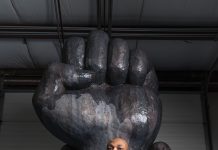
Now available for view online, Framing Identity: Representations of Empowerment and Resilience in the Black Experience is inspired by Frederick Douglass’ view on picture-making. Often considered the most photographed American of the 19th century, the abolitionist once said that picture-making is the secret to poets, performers, and prophets’ success.
“As an accomplished writer and orator, Douglass would often state how photography was an innovative tool that allowed a person to construct an empowered self-image,” says Framing Identity curator Samantha Hill, a graduate student at the university’s School of Information and a fellow at U-M’s William L. Clements Library, in a press release. “Douglass also connected photography to the evolution of a community — how a single image can incorporate our creativity, accomplishments, as well as obstacles that inspire us to connect to humanity’s shared existence.”

These materials are accompanied by text that provides context on each image. An introduction to Framing Identity also gives more insight into Douglass’ philosophy and how it connects to the exhibit’s concept.
Framing Identity will be discussed during a free digital event at 10 a.m. on Feb. 19. A part of the Clements Bookworm history webinar series, the event is open to the public, but guests must register online ahead of time to join.
To view the exhibit online, click here.
|
|
|









